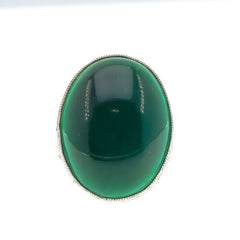Recently Sold (VBR028)
Rarities Antique Jewelry
Sorry, this item is Sold
Candy Cane Lane - Vintage Retro Gold Plate Enamel Brooch. This sweet brooch is crafted from gold plated metal. Featuring enamel work, and Vintage styling. The brooch is designed in the form of two candy canes with red and white enamel striping, holly, and a red bow. The brooch has a pin and lock mechanism, in perfect working order. The charming Vintage brooch would make a perfect Christmas gift for that special someone. So cute!
“Legend has it that the candy cane dates back to 1670, when the choirmaster at the Cologne Cathedral in Germany handed out sugar sticks among his young singers to keep them quiet during the Living Creche ceremony,” Schildhaus says. “In honor of the occasion, he bent the candies into shepherds’ crooks.”
Susan Benjamin, founder of True Treats Historic Candy, truetreatscandy.com, and author of Sweet as Sin: The Unwrapped Story of How Candy Became America’s Pleasure, agrees the candy cane most likely took shape in 17th century Europe when pulled sugars, the parent to today’s sugar sticks, were all the rage. It was at that time, somewhere in Germany, that a hook was added to the stick, she says.
Benjamin also cites the theory that a German choirmaster gave candy sticks to still his fidgety choirboys during services. (It was a gentler form of enticement than “whacking them with a switch,” she says.)
She says the story has some credibility, but “it’s just as likely Germans added the hook to hang them from trees, alongside cookies, fruits and other treats.”
Candy Canes Were Once Only White
Most, however, agree the white candy cane made its U.S. debut in 1847 in Wooster Ohio, according to Schildhaus, when August Imgard, a German-Swedish immigrant, decorated a small blue spruce with paper ornaments and candy canes.
Or course, today, there’s nothing more iconic when it comes to candy than the alternating red and white stripes of the candy cane, but, according to Schildhaus, for 200 years, before mass-production was automated, they came in just one color: white.
At the turn of the 20th century, the red stripes—and peppermint flavor—emerged as the most popular choice,” she says.
“With the stripe came legends of stories about the candy cane, such as it being a secret code among persecuted Christians in Germany or England in the 17th century; a secret language amongst the Christian faithful depending on the stripe—three represented the trinity, one Jesus’ sacrifice),” she says, adding, “and the more general role of the stripe as the blood of Jesus.”
True? “I’m not sure,” Benjamin says. Still other theories contend the candy cane’s “J” shape is an homage to Jesus, but Benjamin says that’s an urban legend.
As for the best way to eat the Yuletide treat: Schildhaus says an NCA survey found that 72 percent of people think that starting on the straight end is the "proper" way to eat a candy cane, while 28 percent start at the curved end.
Enamel History: The earliest known enameled pieces have been dated to the 13th century BC, when Mycenaean goldsmiths inlaid enamels into gold rings. ... In the 5th century BC, Greek artisans used enamel to decorate artwork such as the Phidias statues of Zeus.
Measurements: Brooch 27.00 mm x 20.00 mm
Weight: 2.60 grams
Condition: Excellent
Origin: America
Date: 1980s

















